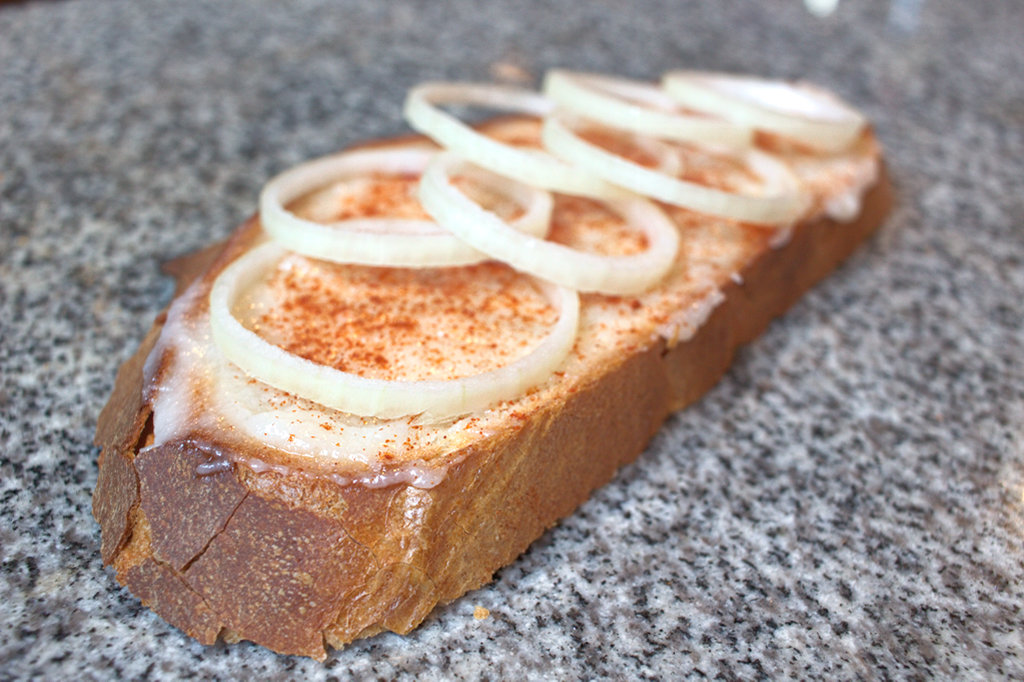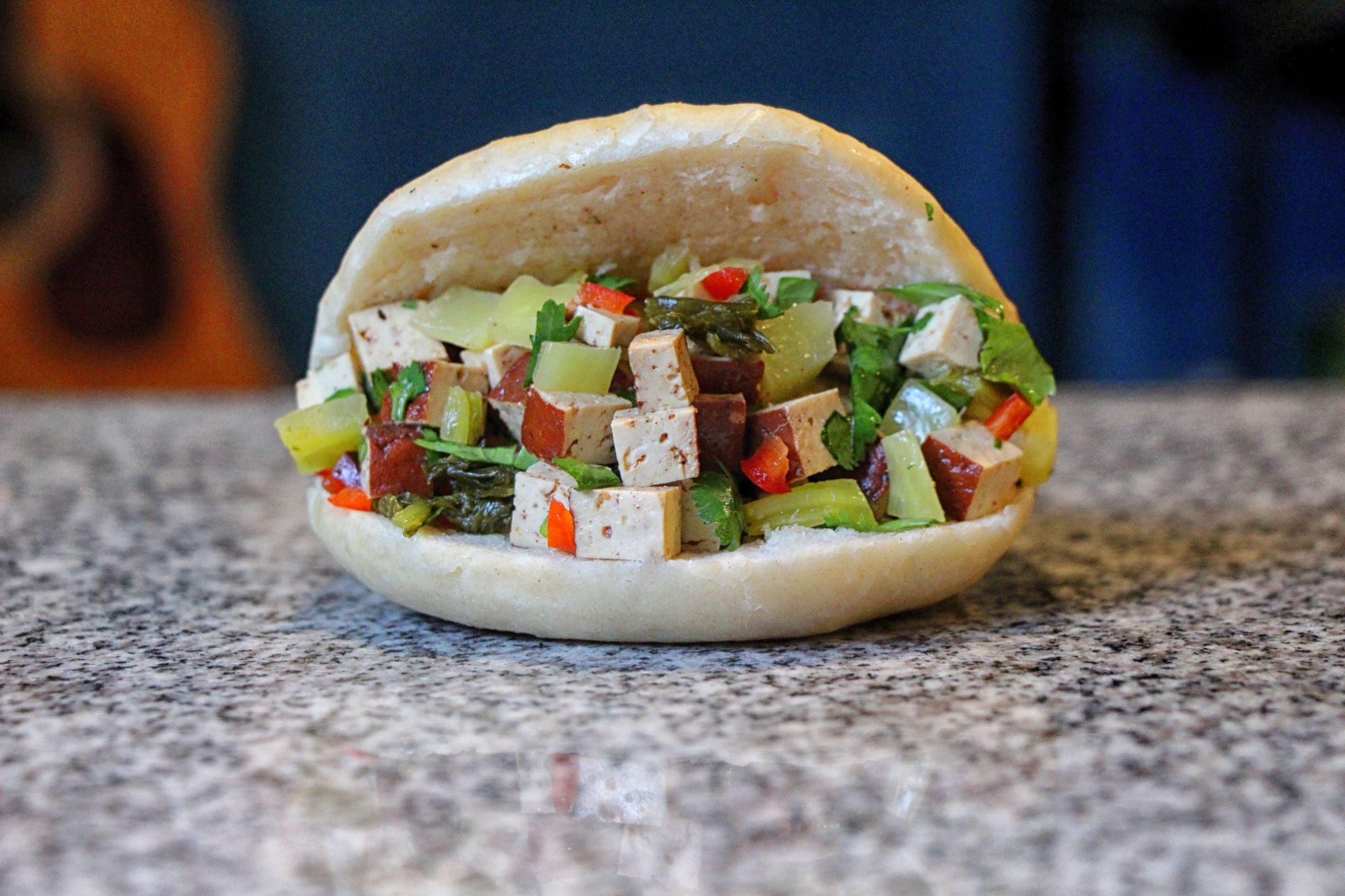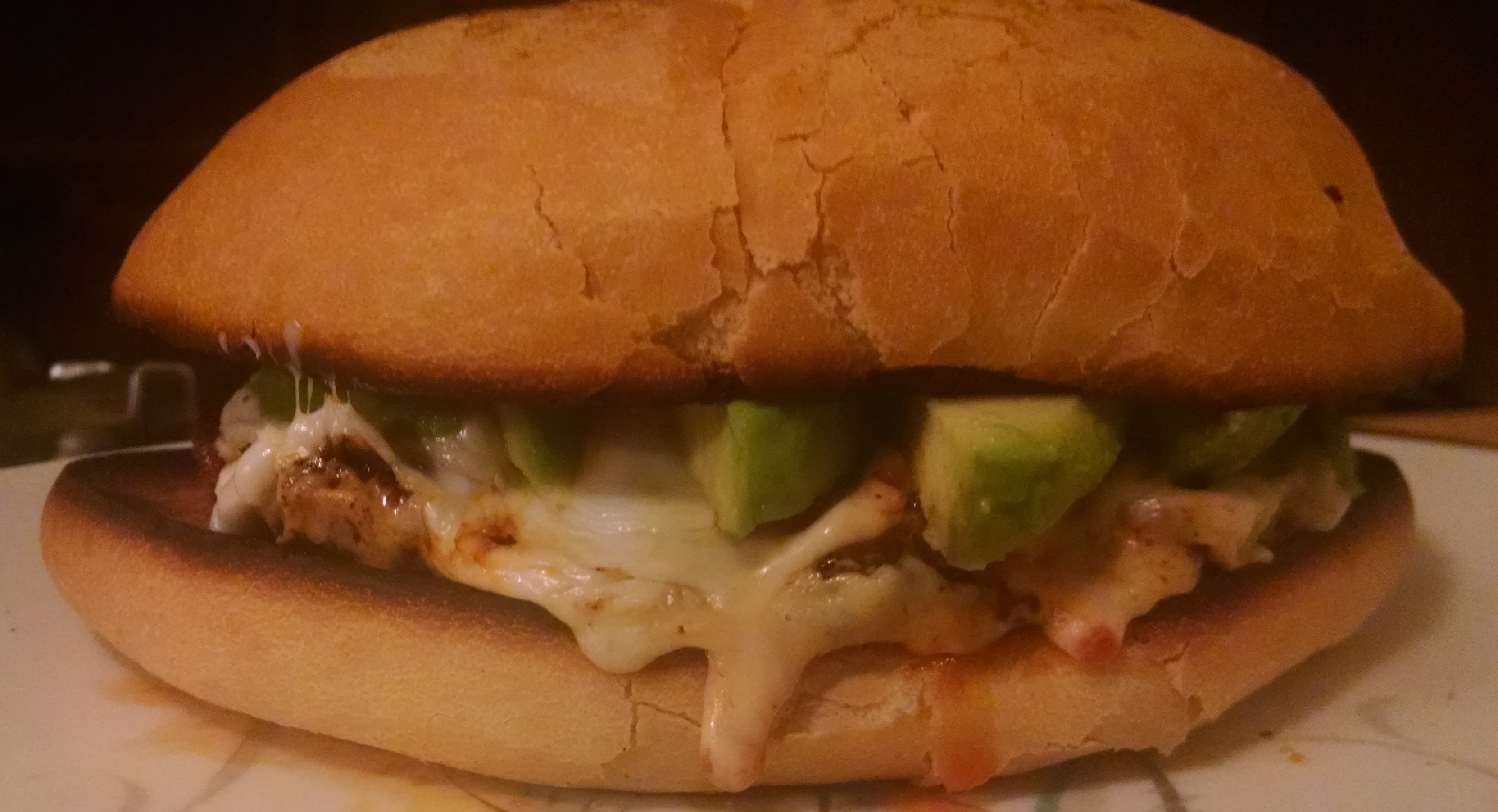Hungary’s Fatty Bread
Paprika is commonly associated with Hungary–many of Hungary’s iconic dishes feature the spice–Chicken Paprikash naturally, but also Gulyás (Goulash), Pörkölt, Lecsó (Hungarian ratatouille), and many others. In fact the word Paprika itself is a Hungarian word, loaned out to many other languages including English. Paprika didn’t originate in Hungary, though. Paprika is a spice made from dried chilis, and chili peppers are native to the Americas. They were brought back to Europe by the Spanish, and most likely made their way into Hungary via Turks from the Ottoman Empire, who adopted paprika’s use as a seasoning earlier than the Hungarians did.
Paprika is a variable spice, coming in many varieties, mostly boiled down to hot, sweet, or smoked. If a paprika doesn’t say whether it’s hot or sweet, it can generally be assumed to be sweet paprika, and can just as reliably be assumed to be of lesser quality. If a paprika is labeled as smoked, it can be assumed to be Spanish paprika or pimentón and thus unlikely to be appropriate for a Hungarian dish.
If a paprika is labeled as Hungarian though, it may be hot or sweet or anywhere in between, from brilliantly red through duskier bricklike colors and into orange in appearance. While in the US we may reliably be able to find 3 different types of paprika in the spice section of our local grocery, Hungarians classify eight different types of paprika based on color and flavor
So I wasn’t surprised to see that the first Hungarian sandwich to feature on our List was flavored with paprika. I was, however, a little surprised to see the full ingredient list. Bread, lard, onion, paprika. It’s called Zsíros Kenyér, the “fatty bread” of Hungary.
Zsíros Kenyér
The sandwich really is that simple. Served open-face, the sandwich features a thick slice of untoasted bread–some sources call for rye, but most that I saw used a hearty country-style white bread instead–slathered with rendered lard and topped with rings of onion and a sprinkling of paprika. According to an article I read recently, the sandwich is dying out as a cheap snack in the pubs of Budapest.
However, and I love it when this happens, as recently as 20 years ago a Hungarian band called Smog (no association I’m assuming with the Bill Callahan project) recorded an ode to the simple delights of a Zsíros Kenyér pulled from a sack and munched on partway through one’s shift at work.
On a side note: Please, everybody, send me any songs you know of that are explicitly about or even just reference sandwiches we’ve covered. Between this, Alexander Marcus’ strangely hypnotic Hawaii Toast, and Pappo’s psychedelic ode to Sandwiches de Miga, we’ve got the start of one heck of a playlist!
I’ve read recommendations to render one’s own lard for this, but I bought high-quality Mangalitsa lard–made from a Hungarian breed of domestic pig known for excellent meat high in fat–and thought I’d start there.

Between the recipe bloggers urging me to only use rye bread, never white, and those insisting that rye bread was for suckers and only rustic white bread would do for fatty bread, the latter chorus was louder, and so I sought out an English-language recipe for Hungarian white bread that seemed to fit the bill. If I’d read the recipe more closely, I’d have noticed that it made an absolutely enormous 3+ pound boule

From there, the recipe is simplicity itself. We start with a thick slice of bread.

We spread on a thick layer of lard.

Then you sprinkle on some paprika. For a people with as many different types of paprika as the Hungarians, recipes do not specify a particular kind for the most part. I started with sweet.

Then some sliced rings of onion. In some of the videos I’ve watched, people have used some pretty thick slices–I’d go so far as to call them hunks of onion. I used a mandolin and sliced them on the medium-thin side of things.

An additional note on onions: A lot of recipes call for red onions, but in many of the videos I watched, they were using yellow onions. I learned that what Hungarians call red onions, we call yellow onions, and what we call red onions, Hungarians call purple onions. In any case, I used yellow onions here but I think red onions (or purple if you’re Hungarian) would work quite well.

As you can see, I also sprinkled on some coarse flakes of salt. The flavor of this sandwich was… surprisingly good, and oddly familiar. The lard gave the bread some kind of essence of porkiness, giving an already delicious slice of good, crusty bread a lush mouthfeel, punctuated cleanly by the pungency of the onion.

I made another, this time with the bright-orange hot Hungarian paprika. Similarly, there was a sense of familiarity to this flavor combination, which added piquancy from the paprika to the rich and biting lard/onion combination.

And that was that, or so I thought. Hungarians, though, have a surprising number of ways to combine bread and pork fat.
Sutni Szalonna
See, some of the writeups about Zsíros Kenyér recommended rendering your own lard, as I mentioned earlier. Some of them went further, and recommended rendering your own lard from a piece of Szalonna–a Hungarian type of smoked fatback often called Hungarian bacon, though just as often furiously defended as not just bacon. These campfire sessions are called sutni szalonna, or bacon roasts
In sutni szalonna, the fat is held over the fire in a special long-handled rack made for the purpose, or simply on an improvised wooden skewer provided by the forest, as with a marshmallow roast. As the fat renders and begins to drip, the hunk of pork fat is moved over a thick slice of bread, allowing it to catch the rendered lard. Once the bread is sufficiently sodden with smoky pork drippings, it’s dressed with thin-sliced vegetables–cucumber, tomatoes, onions, peppers–and sometimes some of the crunchy bits of pork fat. Other people dress the bread with vegetables first, and let the lard baste them on its way to soaking into the bread.
This version of fatty bread is then enjoyed around the fire with family or friends and often accompanied by shots of palinka, a Hungarian fruit brandy made from apricot, plum, cherry, or other fruits.
If you know me, you know this sounds like my kinda party. Given the state of things today–and given that the only Hungarian shop I could find within reasonable driving distance was a Kosher deli unlikely to serve pork fat–I mail-ordered a couple pounds of Szalonna online. It arrived quickly, and was spectacularly unadulterated by actual meat.

A crawl of all the Polish and eastern European liquor stores I could find nearby netted me a bottle of Croatian “imitation” pear brandy, a neutral spirit colored and sweetened with a yellow syrup. More promising, I found a Serbian plum brandy, a clear spirit distilled from plum wine. It wasn’t until I visited the aforementioned Hungarian Kosher market that I found an actual made-in-Hungary plum brandy. Heck with it. Let’s sample all three.

This firepit, roughly 20 feet from the back door of my house, is my coronavirus lockdown version of a roaring campfire in the woods. It is also my non-lockdown version of that.

I sat by that fire, pork fat skewered on a roasting fork that was clearly designed for the weight of a marshmallow and not 6 or so ounces of lard-to-be. The wind blew smoke into my eyes no matter where I moved my chair, as the laws of nature demand.

Every so often the fat would begin to drip, and I’d quickly move the Szalonna over to the plate where my thick slice of homemade Hungarian bread awaited. As the fat rendered, the surface began to pucker a bit. Slicing a shallow crosshatch pattern in the surface of the Szalonna released more liquid fat, which I dripped onto the bread.

Eventually, I got to a point where either the bread wouldn’t take on any more lard, or I was too impatient to get started eating, or maybe it was just too cold outside, even with that nice fire going. There’s only so far the fat will soak into the bread, though, before the thermal mass of the bread absorbs what heat the drippings retain from the fire and solidifies them.

I dressed this fatty bread with cucumbers, tomatoes, onions, Hungarian wax peppers, radishes, more paprika, and flakes of coarse salt. I also sliced off some of the pieces of szalonna that had cooked through enough to resemble the crisp fatty bits of bacon.

Even more lush than the Zsíros Kenyér we’d had previously, and more thoroughly dressed with vegetables, the familiar flavor we’d detected before was intensified somehow by the smokiness imparted by the szalonna and the campfire. I contemplated digging into that more and trying to articulate what it was I was detecting.

Instead, I got into the brandies. The Croatian brandy was every bit as awful as I’d expected it to be, a sugary 56-proof concoction of artificial flavors. The plum brandies, though, were interesting. Distilled from plum wines, they were not sweet, yet they retained some of the fruit character of the source. The Serbian plum brandy was smoother, easier to drink, while the Hungarian brandy had a harsher alcohol flavor, but I found myself enjoying switching back and forth between the two and appreciating their differences.
Some time later, I realized that I still had over a pound of Hungarian Szalonna and no idea what to do with it. Would I need to have another campfire? I needn’t have worried. The Hungarians have thought of everything.
Abált Szalonna
Again, a Hungarian speaker might quibble with these translations, but if sutni szalonna is a bacon roast, abált szalonna is a bacon boil. The fat is simmered in enough water to cover, along with garlic, a little salt, perhaps a bay leaf or juniper berry or some black peppercorns. Once the rind has softened, it’s removed gently from the water and spread with a paste made of garlic, salt, and of course paprika. Then it is chilled thoroughly.

This cooked seasoned pork fat is then sliced thin and–once again–served on bread with onion. You could even add more paprika if you wanted to, but I think it’s got plenty.

As we were out of my Hungarian bread–yes, we ate that entire gigantic loaf–I picked up a sourdough boule at a local chain bakery that I’ve mentioned here once or twice before. Then I carefully sliced the szalonna as thinly as I could. I was aiming for sliced so thin as to be translucent. I believe I got there.

The bread for this is supposed to be warm, but I didn’t get the sense that it should be toasted. I put a slice under the broiler long enough to heat up the surface on both sides without adding any color.

Then I added the thinly-sliced szalonna. The fat has been cooked and is essentially a meat jello at this point, and when it comes into contact with the warm bread, it softens and starts to glisten with droplets of fat. No butter–as with the previous fatty breads, the pork fat is the butter.

Atop the Szalonna I added sliced onion and Hungarian wax pepper, along with a sprinkling of my flaky salt. And yes, I did end up adding more paprika.

I’ve used the word “lush” as a crutch twice already in this piece, and I’m trying to avoid using the adjective rich. But let me see if I can describe this to you. You bite into this–the bottom layer, the crispness of a slightly-toasted crusty sourdough, the top layer the crunch of pungent onion, the heat of the chili and the paprika. Your teeth meet in the middle, at a layer of fat that softly parts and, while retaining its shape, somehow also explodes and coats the bread, the pepper, the onion, your tongue, in a thin layer of faintly smoky porkiness. It’s rich, it’s lush, it’s a sensory experience beyond just that maddeningly familiar flavor that this combination of paprika, pork, and onion somehow keeps suggesting.

My son Damian took a bite, and then articulated what I hadn’t been able to. “This combination of paprika and pork fat and onion… It tastes like Lay’s barbecue chips,” they said.
I wondered aloud if Damian’s sudden revelation about the flavor that had been nagging at all of us was because of the crunchiness of the slightly-toasted bread. Damian thought it might be the more prevalent porkiness from the sliced abált szalonna as opposed to rendered lard.

Yes, it’s true that paprika is a commonly and prolifically used seasoning in barbecue, and pork is among the meats best suited to low-and-slow cooking over smoke. The flavoring for artificial barbecue flavoring for potato chips likely incorporates both paprika and some form of simulated pork flavor, as well as both onion and garlic powders. Regardless, barbecue was the flavor, the kind of vaguely generic barbecue flavor detached from any particular source or texture or saucy sweetness that one might find on a BBQ potato chip.
There’s more to it than that, of course. The experience of eating these sandwiches is far more interesting than tearing through a tube of Pringles. But that combination of pork and smoke, paprika and onion, that typefies these Hungarian fatty breads, is also the basis of American barbecue. It’s a happy coincidence that may make this sandwich far more accessible to people in the US than one might think on first glance.
I must admit that when I first read about this sandwich, I had a kind of negative reaction to the thought of spreading lard on bread and eating it with onions. Now, I’m contemplating whether I should have it for lunch *again* tomorrow or branch out a bit. Don’t let your food phobias get the better of you. Try a Zsíros Kenyér if you can. Just maybe slice those onions a bit thinner than a Hungarian would.

I like sandwiches.
I like a lot of other things too but sandwiches are pretty great











your description of this childhood food of mine was so beautiful i could almost taste it! as a hungarian jew, i have never tried the mangalica/szalonna version of this sandwich, but i can assure you it’s just as good with duck or goose fat! you can find those at most polish delis as well. i would also recommend eating it with thin slices of red (or purple) onions, since they have a slightly sweeter and less aggressive taste.
otherwise i would also recommend trying “körözött” or liptauer as some call it. if you decide to try it, make it with bryndza instead of regular cows quark, it’s much better!
sending love from hungary!
Hajni
Thank you for your comment! I am very glad to hear that I did justice to a treasured food from your childhood, and if you have any other favorite Hungarian foods I’d love to hear about them!
I came on here to try and find your Toum recipe from Tiktok, but holy %^&$ if this didn’t bring back a flood of memories. My maternal grandpa died this past summer and my grandma back in 2020, but THIS was Sunday morning at their house. There was no rendering, just a big wedge of szalonna on swedish light rye from the loblaws, with a dash of paprika for coloring.
I can’t even remember the taste but now I feel compelled to seek out the butcher where grandma used to go every Saturday. I can picture that cured slab of bacon sitting on a paper towel on top of their microwave like it was yesterday, and not decades ago.
Thanks for this unexpected nostalgia trip. Feels like someone’s cutting onions in here…
This was a really lovely comment. I’d love to hear about it if you ever do go back and find that butcher!
Well, my Hungarian grandparents, and all my Hungarian uncles, always used rye bread for our sült szalonna. Always.
That’s really good to know, thanks!